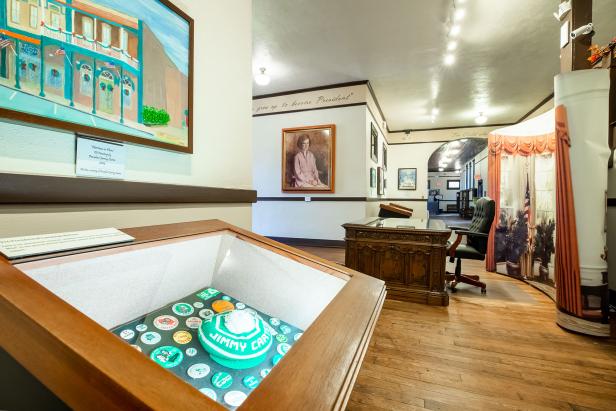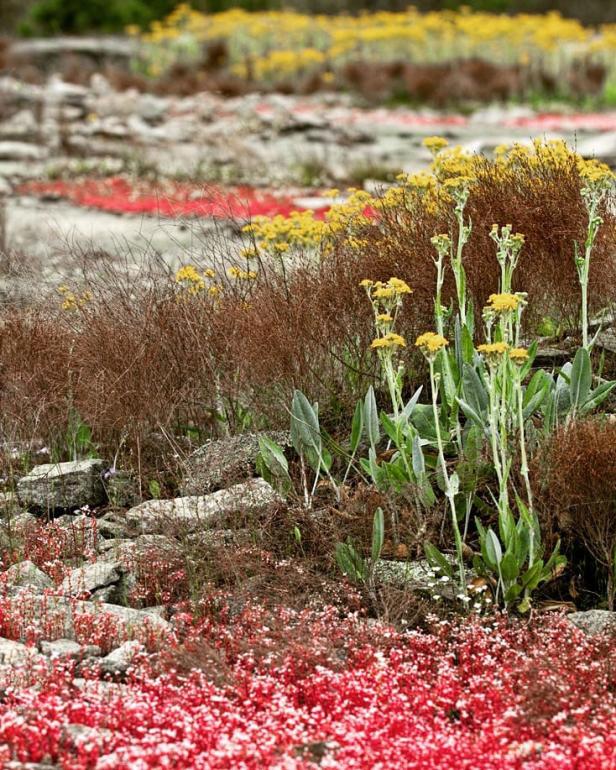Amazing Things to Do at National Parks in Georgia
Georgia has 11 national parks, three national heritage areas, two national trails, and many other special places managed by the National Park Service.
The National Park System is called "America's best idea," with thousands of protected acres of different types of landscapes. But it also includes historic landmarks such as Fort Frederica National Monument, recreation areas, and other culturally significant sites.
From Atlanta to St. Simons Island, Georgia has 11 national parks, three national heritage areas, two national trails, and many other special places managed by the National Park Service. Not only can you find extraordinary scenery on the Appalachian Trail, you can track the country’s history from prehistoric settlements at Ocmulgee Mounds National Historical Park to the Civil Rights Movement at Martin Luther King, Jr. National Historical Park by exploring these eight national park sites in Georgia.

Exhibit inside Plains High School in Plains, Georgia. Photo by @benjamingalland
1. Find out how a U.S. President grew up in Plains
Jimmy Carter National Historical Park
Learn about the only president born in Georgia at the Jimmy Carter National Historical Park in Plains. It encompasses multiple locations, including his boyhood home, the high school he and his wife Rosalynn attended, and the former train depot that served as his campaign headquarters. All have artifacts and exhibits related to his extraordinary life and rise from peanut farmer to Nobel Peace Prize winner.
Read more: How to Experience President Jimmy Carter's Life and Legacy

Ocmulgee Mounds National Historical Park in Macon, Georgia. Photo by Visit Macon
2. Explore a prehistoric American Indian site in Macon
Ocmulgee Mounds National Historical Park
Ocmulgee Mounds National Historical Park in Macon traces 17,000 years of human inhabitants. Set on the Ocmulgee River a short drive from downtown, the park has eight miles of walking trails, and the visitor center has an informative museum. Go inside the continent’s only reconstructed Earth Lodge with its original 1,000-year-old floor, and climb to the top of the Great Temple Mound. The site also has a former colonial trading post. The Ocmulgee Lantern Light Tours and the Ocmulgee Indigenous Celebration are two of the best events held there.

Fort Frederica National Monument on St. Simons Island, Georgia. Photo by @gcalebjones
3. See the archeological remains of colonists on St. Simons Island
Fort Frederica National Monument
Fort Frederica National Monument on St. Simons Island was built in 1736 as a buffer between Spanish Florida and British South Carolina. James Oglethorpe’s troops defended the island from the Spanish, and the fort was later disbanded. Some remnants of the structure exist today, including pieces of wall built of tabby, which is a mixture of shell, sand, and water. Archaeologists now work at the site to discover what life was like during this period of colonial history, and visitors can see some of the objects found on the site in the visitor center museum.

Dorchester Academy in Midway, Georgia. Photo by @exploreliberty
4. Learn about Gullah Geechee cultures on the coast
Gullah Geechee Cultural Heritage Corridor
The Gullah Geechee Cultural Heritage Corridor spans the border between Georgia and South Carolina, educating visitors about the African people who settled in the Sea Islands, where they created their own Creole-style language, cuisine, and culture. Explore several sites in Georgia that are part of the corridor:
- In Savannah, the Pin Point Heritage Museum is set inside a former crab and oyster factory founded by freed slaves. Exhibits focus on the Pin Point area and the main employer.
- Dorchester Academy in Midway was the site of a school for freed slaves after the Civil War. Dr. Martin Luther King, Jr. even came here to plan the 1963 march in Birmingham.
- Sapelo Island is home to Hog Hammock, a Geechee community of descendants of enslaved West African people on the island’s plantation. The area has historic homes and buildings as well as tours.
- Similarly, Cumberland Island had a community of freed slaves on the northern end of the island, establishing landmarks like the First African Baptist Church.
- Harris Neck is now a wildlife refuge, but it was previously a cotton plantation. After abolition, freed slaves purchased parcels of land, living as subsistence farmers and watermen.
- The Historic Harrington School was built in the 1920s and served as the main educational structure for three Gullah Geechee communities on St. Simons Island. It is now a museum and cultural center.
- The Wanderer Memory Trail on Jekyll Island tells the story of America's last known slave ship, the Wanderer. The trail is located along the banks of the Jekyll River, where the ship illegally came ashore with more than 500 enslaved Africans.

Arabia Mountain National Heritage Area in Lithonia, Georgia. Photo by @markchandlerphotography
5. Explore a historic community in Lithonia
Arabia Mountain National Heritage Area
Arabia Mountain is one of Georgia’s incredible "monadnocks," or massive outcroppings of granite, but the hiking trails and wildlife are just part of the draw of the sprawling 40,000-acre national heritage area. It also includes Flat Rock, one of the oldest African American communities in Georgia, established in the 1800s. The Flat Rock Archives serves as a museum and genealogical resource about the early families that inhabited the community. Guided tours, including the historic cemetery, are available.
Read more: Hidden Gems in the Arabia Mountain National Heritage Area

Ebenezer Baptist Church in Atlanta, Georgia. Photo by @kodysworld2
6. Hear Dr. Martin Luther King, Jr.’s voice in Atlanta
Martin Luther King, Jr. National Historical Park
Travelers come from all over the world to Atlanta to see the Martin Luther King Jr. National Historical Park, which encompasses his birth home, historic Ebenezer Baptist Church, and tomb. The National Park Service-managed site has a museum with artifacts, including the wagon that carried his casket on a funeral march through Atlanta on April 9, 1968. At the King Center across the street, visitors can see the Grammy Award he won for Best Spoken Word and the hotel key from the Lorraine Motel, where the leader of the modern Civil Rights Movement was assassinated.
Read more: 6 Can't-Miss Spots at the Martin Luther King, Jr. National Historical Park

Augusta Canal in Augusta, Georgia. Photo by @k_wadford
7. Tour an industrial power canal in Augusta
Augusta Canal National Heritage Area
The Augusta Canal National Heritage Area is a feat of engineering, harnessing the power of the Savannah River for power since 1845. The energy from the canal led to the creation of textile mills and manufacturing operations in the area. In addition to the museum at the Discovery Center, which focuses on the history of the canal, there are boat tours of the nearly 12-mile heritage area and trails for hiking, running, and biking. Canoers and kayakers can enjoy paddling the canal, as well.

Mountain Crossings on the Appalachian Trail in Blairsville, Georgia. Photo by @charislogia
8. See an Appalachian Trail anomaly in Blairsville
Appalachian Trail
If you don’t want to make the entire 14-state trek from Georgia to Maine on the Appalachian Trail, or even to traverse the starting point at Springer Mountain, you can still "hike the AT." The Appalachian National Scenic Trail cuts through Mountain Crossings at Neel Gap in Blairsville, a store selling hiking essentials and a hiker hostel in a building constructed by the Civilian Conservation Corps in 1937. It’s the only place the Appalachian Trail passes through a human-made structure in all of its 2,193 miles.




